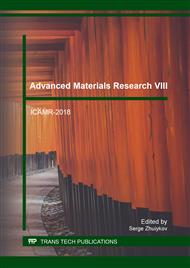p.269
p.275
p.280
p.285
p.290
p.295
p.300
p.305
p.309
Effect of Construction Material on Greenhouse Gases Emission and Energy Use for Residential Buildings
Abstract:
This research work shows how building construction material effects environment, it is based on the performance of ecofriendly (mud) and non-ecofriendly (concrete) materials on the similar residential buildings, located in the climate of Delhi, India. Comparative study of Mud and concrete has been performed. The analysis of each case study includes the calculation of annual carbon emission and energy use, was simulated by using Autodesk Revit software (version2015). As per result, it is clearly visible that by using ecofriendly material we are able to save 93% annual energy cost.
Info:
Periodical:
Pages:
290-294
Citation:
Online since:
March 2018
Authors:
Keywords:
Price:
Сopyright:
© 2018 Trans Tech Publications Ltd. All Rights Reserved
Share:
Citation:


